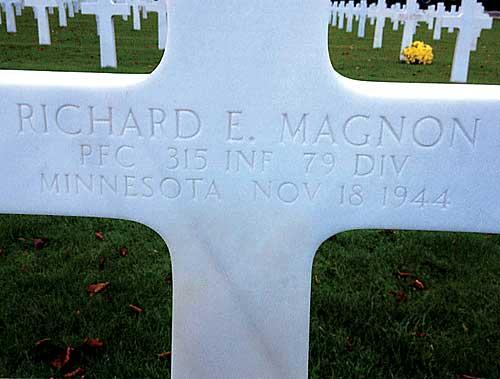French citizen Marc Corriger recently adopted the WWII grave of Private First Class Richard Magnon, a Minnesotan soldier buried in a French cemetery. Upon adopting the stone, Corriger immediately began looking into the history of the man who was buried there. One of his primary goals in doing so was to discover history on the deceased’s family and send them updates, information, and photographs of the site. As it turned out, the nearest relative of Magnon’s was Mary Lou Schneiderhan, who did not know much about the man buried in the WWII grave.
Due to her age during WWII, Schneiderhan never knew her father. He met his grave during the war, when Schneiderhan was not even a year old. As a result, all she has ever really known about him was what other people told her, as well as what she could glean from service records and other such public documentation. The Bloomington woman is grateful that Corriger took her into account, and as such she plans to open up a correspondence with him.
Corriger was not alone in his efforts, and the Becker County Historical Society has been researching what little information they can find on Magnon as well. Schneiderhan has never actually seen her father’s WWII grave in person, despite having been to the area. She has seen pictures, however, which were given to her by a friend, the Brainerd Dispatch reports.
Not only did Corriger send Schneiderhan some dirt and grass from the grave, but he scooped some up while on a trip to Minnesota so that he could adorn the fallen WWII soldier’s resting place with his native soil. Given their inability to meet, it is the one physical connection that Schneiderhan has to Magnon. Her father died while he was still a teenager, having been sent to war from his home on the White Earth Indian Reservation. While Schneiderhan was able to grow used to the lack of having her father around, it was harder on family members who knew him to be a kind, compassionate, and joyful man. While she never got to experience these qualities in him herself, she is grateful to know that people familiar with the man find them comparable.
Adopting a WWII grave is not an uncommon practice. The point is to help keep the site cared for by contributing money to its upkeep. Others have certainly taken it to the same further level as Corriger, but Schneiderhan is nonetheless touched by his gesture. Since Corriger went above and beyond, his adoption of the WWII grave convinced Schneiderhan’s local museum to further research her father, a man she will only ever know in spirit.
//
